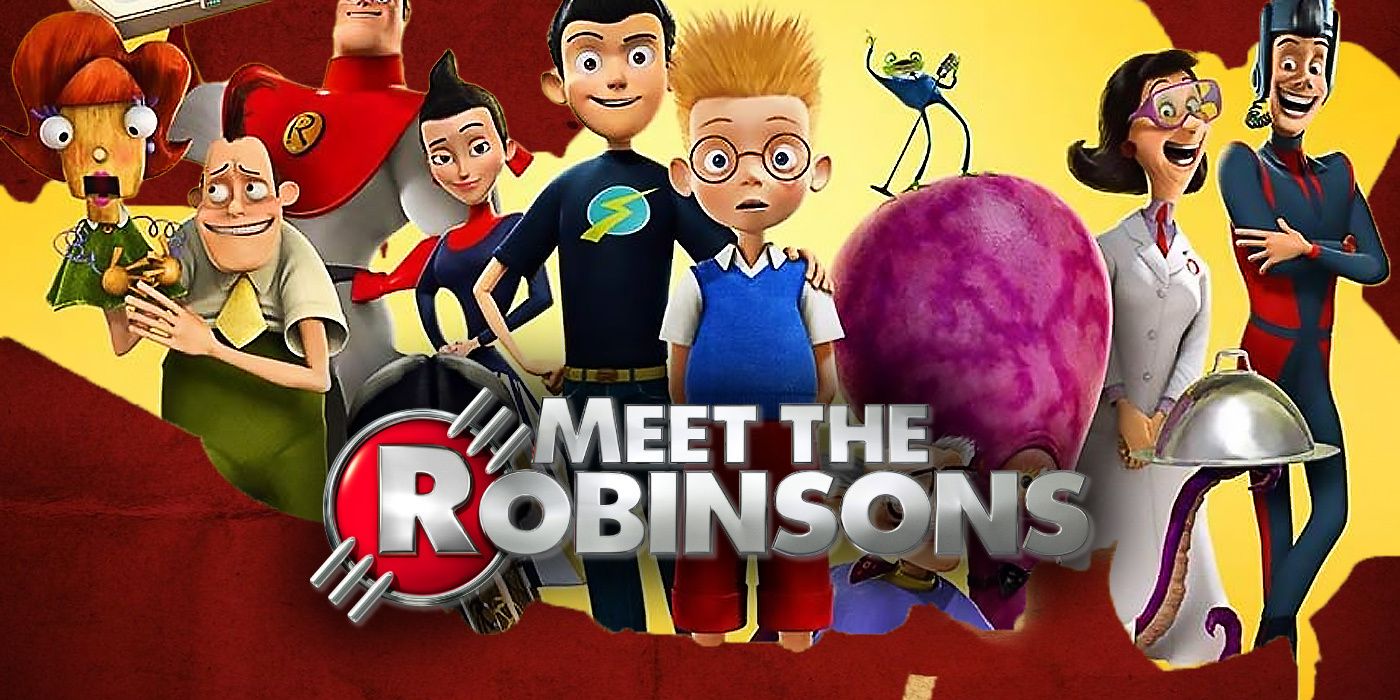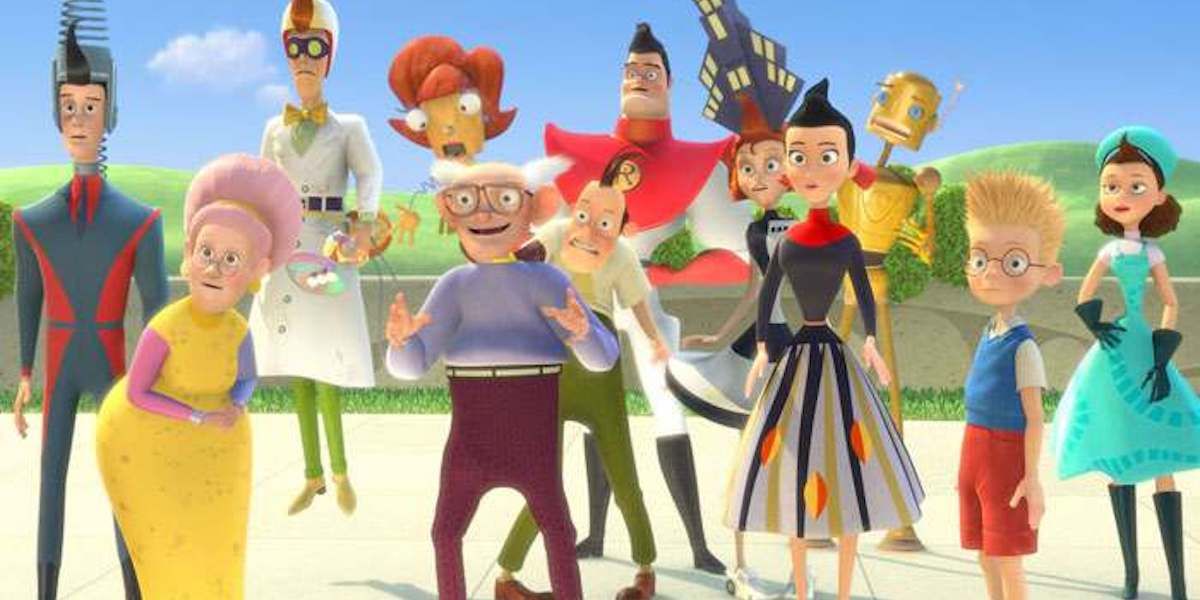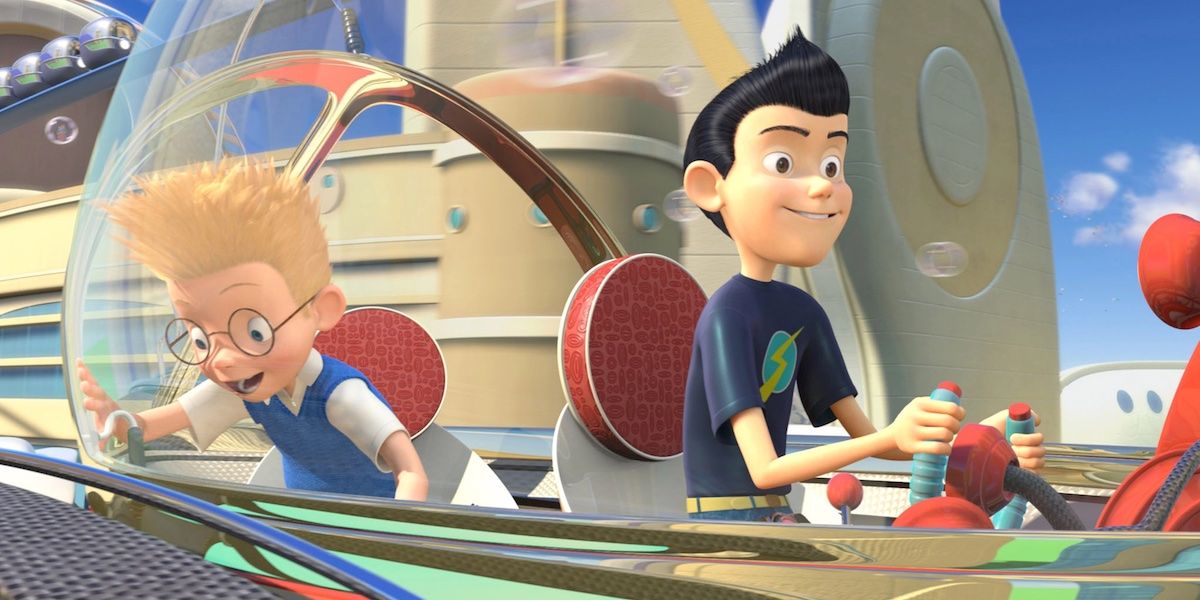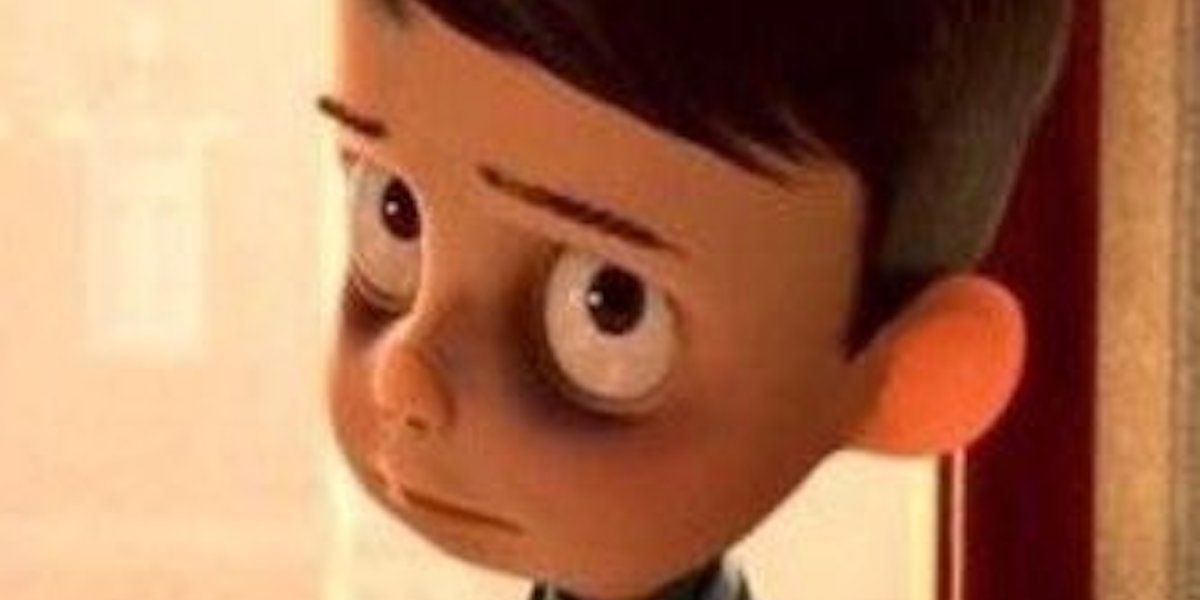Today, Walt Disney Animation Studios has gotten on a hot streak thanks to titles like Frozen, Zootopia, and Encanto, but no studio, not even one connected with the Mouse House, is permanently successful. In the mid-2000s, Walt Disney Animation Studios was in the opposite state and struggling to figure out its place in a radically changed landscape for American animated cinema. The 2007 outing from the company, Meet the Robinsons, didn’t solve all the identity-related issues Walt Disney Animation Studios was dealing with and even indulged in some recurring flaws of its then-recent works. However, in more numerous ways, Robinsons was also a signal of hope for the future of the studio and a welcome departure from the past.
To understand the ups and downs of Robinsons, it’s important to understand the position Walt Disney Animation Studios occupied in the mid-2000s. The company’s output had been in a box office slump in recent years and had fallen wildly behind competing projects from PIXAR Animation Studios and DreamWorks Animation. The projects that had emerged garnered critical reviews that were far from the acclaim that greeted earlier endeavors like The Lion King. Worst of all, titles like Chicken Little were derivative of other productions being made at the time. The days of Walt Disney Animation Studios establishing trends others wanted to mimic were over, Disney was now the imitator, not the innovator.
The arrival of John Lasseter and Ed Catmull as new heads of Walt Disney Animation Studios at the start of 2006, in the wake of Disney purchasing PIXAR for just over $7 billion, signaling a new era was on the way for the studio. It also meant that titles in the pipeline for Disney Animation, such as Meet the Robinsons, would have extra pressure to live up to. They couldn’t just be amusing diversions, they had to help justify why Disney Animation was even around in the first place. In some critical ways, Robinsons didn’t quite live up to this goal or even just work as a standalone property devoid of its historical context.
For starters, the film’s computer animation was indicative of Disney Animation’s struggles to make this medium work in a pre-Tangled world. The first CG-animated title from the studio to be headlined by humans rather than poultry or dinosaurs, the character designs of Meet the Robinsons left something to be desired. Save for the lanky and maniacal-looking Bowler Hat Guy (voiced by the film’s director, Stephen J. Anderson), characters like Lewis (Jordan Fry) or Wilbur Robinson (Wesley Singerman) looked like they could’ve walked out of any animated movie. The limits of computer animation in this era meant that Meet the Robinsons couldn’t live up to the illustrations of William Joyce, who penned the project’s source material.
An avalanche of goofy supporting characters to round out the titular Robinsons clan also indulged in a problem that plagued Disney Animation films of this era (see: Home on the Range and Chicken Little) where the screen would be packed with supporting characters. These figures existed to spawn merchandise rather than whether they provided amusement or something solid to the story. Even as Meet the Robinsons was charging towards something different, it couldn’t avoid this significant hiccup that was common in Disney Animation films from this era. In the process, Meet the Robinsons regularly feels too crowded and frantic for its own good, with more screentime devoted to straining for jokes than just letting the audience get to know these wacky people.
On the upside, Meet the Robinsons did deliver several facets that separated it from most other 21st-century Walt Disney Animation Studios features and indicated that this studio was on the track to recovery. For starters, there’s the fact that a twist regarding the identity of Bowler Hat Guy at the start of the film’s third act takes the movie’s story to a whole new level. Suddenly, a new layer of complexity is introduced to the proceedings as well as a fascinating manifestation of the project’s central theme of how the past can warp our visions of the future. Even if this new backstory involves jokes about decorating someone’s workplace in toilet paper, it manages to introduce a level of sophisticated storytelling you just didn’t find in, say, Home on the Range.
This detail also allows for extra fun bits of time travel mayhem, as the previously established future gets upended by the machinations of the evil hat Doris. What was once a simple jump from everyday reality in the present to a wacky future is now taking on shades of Back to the Future: Part II in showing how delicate a timeline can be. Perhaps other 21st-century Disney Animation projects would’ve shied away from this route out of fear of confusing younger audiences. Robinsons, on the other hand, was showing a narrative ambition that would soon become even more prominent and audacious in later endeavors from the studio.
The most important signifier for the future of Walt Disney Animation Studios also came about in the third act of Meet the Robinson in the form of the film’s willingness to embrace poignancy. Granted, it’s not as if other early 2000s Disney Animation fare had eschewed pathos. Lilo & Stich or Treasure Planet had their share of effective tearjerker moments. By and large, though, Walt Disney Animation Studios titles had found other priorities than getting people invested in their characters. After all, this was the post-Shrek world of snarky comedies. Moviegoers, supposedly, wanted to chuckle, not sob.
This, combined with a simultaneous focus on action-oriented productions, meant that pathos was far less of a priority to Walt Disney Animation Studios productions. Dry eyes dominated the multiplexes Dinosaur or Atlantis: The Lost Empire played in. The only people crying in Chicken Little were those thinking of how far Walt Disney Animation Studios had fallen. Meanwhile, the days of films like The Jungle Book or Beauty and the Beast getting audiences so invested in cartoon characters that they’d shed a tear over them were becoming a thing of the distant past.
It's doubtful the big poignant moment of Meet the Robinsons, in which Lewis gets a chance to see his birth mom only to pass on the opportunity, would crack anyone’s list of top ten most moving Disney Animation scenes. However, it’s an extremely well-realized sequence that recognizes that less is more. The tiniest touches in Lewis’s body language are enough to convey the multitude of emotions sweeping over him while the restrained score and lighting choices here add a lot of further resonance to what we’re seeing. This extremely thoughtful scene works well as a standalone entity but considering the norms for Walt Disney Animation Studios fare in this era, it was practically a revelation circa. 2007.
In the years to come after Meet the Robinsons, Walt Disney Animation Studios would get its footing even more secure and deliver significantly more cohesive and polished works. The likes of Moana or Big Hero 6 would find much more effective renderings of CG human beings and merge them with the bolder narrative tendencies and embracing of poignancy that Meet the Robinsons delivered. This 2007 entry in the Walt Disney Animation Studios canon wasn’t a game-changer movie, but it was just the step in the right direction Disney Animation needed at that moment in time. In other words, it was the perfect movie to indicate to the artists at Disney Animation that they just needed to keep moving forward.





